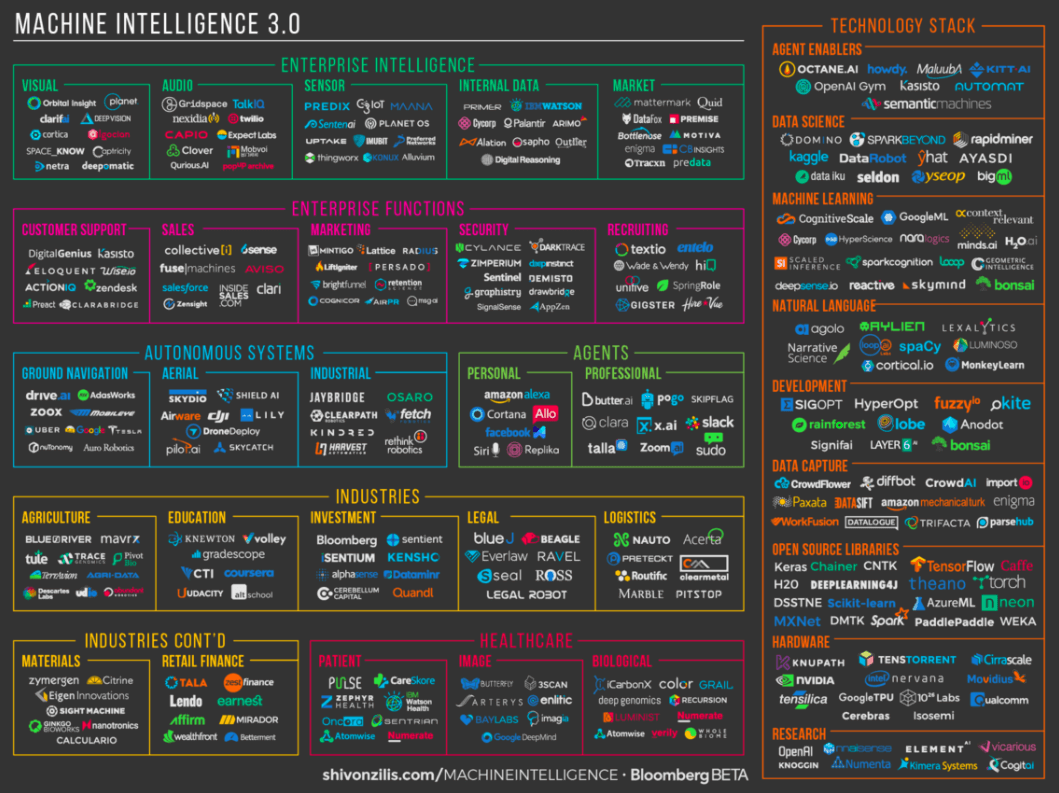In 1900, 41 percent of the U.S. workforce was employed in agriculture. By the year 2000, that number had dropped to 1.9 percent. This massive shift in labor was mostly due to advances in technology and mechanization, allowing for fewer people to create more crop. In the 21st century, other sectors will see the same kind of shift, with automation and AI at its heart.
Many industries are already going through a similar process. Manufacturing may be a lost cause already, with industrial robots, higher efficiency, and lost jobs, but two other industries — self-driving cars and customer service — are on the cusp of massive change.
Transforming the auto industry with autonomy
Regulators in the automotive space are rightly concerned about safety issues, so they have created a framework for the automation of increasingly complex driving tasks. This framework has served as a benchmark for businesses like Tesla and Ford, as well as thought leaders pondering the future of cities and employment.
To prepare for the future, those in customer service tech should do the same. Customer service may not have the same safety concerns or regulatory process as car automation, but the way AI is introduced into work environments, both internally to employees and externally to customers, must be thoughtfully navigated.
June 5th: The AI Audit in NYC
Join us next week in NYC to engage with top executive leaders, delving into strategies for auditing AI models to ensure fairness, optimal performance, and ethical compliance across diverse organizations. Secure your attendance for this exclusive invite-only event.
First, let’s look at the National Highway Traffic Safety Administration’s 5 Levels of Automation, which the NHTSA created to help guide innovation, safety, and regulation for automated driving:
- Level 1: Most functions still controlled by the driver, but specific functions like steering or accelerating can be done automatically by the car.
- Level 2: At least one driver assistance system related to steering and acceleration/deceleration is automated, like cruise control and lane centering.
- Level 3: Drivers can completely shift driving functions to the vehicle, under certain traffic or environmental conditions. The driver is still present and will intervene if necessary.
- Level 4: Fully autonomous vehicles that perform all critical driving functions and monitor roadway conditions for an entire trip. However it does not cover every driving scenario.
- Level 5: Fully autonomous system in which the vehicle’s performance is equal to that of a human driver in every driving scenario — including extreme environments.
According to the Bureau of Labor Statistics, 2.7 million Americans are employed in the customer service space. From an economic and labor perspective, a similar set of levels can help highlight the jobs (or portions of jobs) that will be left for humans to do. From a startup and tech perspective, this will highlight obvious areas where we can increase efficiency and productivity.
So what customer service roles can AI take on?
Applying car lessons to customer service
The McKinsey Global Institute has created a helpful rubric for understanding automation potential of specific job types and industries by breaking up each job into various activities. These activities are ranked from least likely to be automated (left) to the most (right), in terms of current technical feasibility:

So, for example, the average food service job is at high risk of automation because it is 48 percent predictable physical work, and most of the work skews toward activities that are easily automated. Customer service is also fairly similar in its day-to-day activities.
If we follow McKinsey’s rubric and apply it to the average customer service job, the obvious and simplest place to start automation is in the “predictable work” category, such as greeting customers and offering relevant help. From there, automation will target tasks related to gathering and processing rote ticket types and answers (data processing and collection) — basically FAQs — as well as the data needed for robust natural language processing (NLP) capabilities. This would be followed by the AI starting to take over stakeholder interactions, the bread and butter of any successful customer service rep and the most technically challenging aspect of automation in the service space.
Putting all that together, here are my Five Levels of Customer Service Automation:
- Level 1: Specific portions of the service interaction funnel can be automated, such as greetings, ticket type sorting, and routing.
- Level 2: Some rote or recurring issues can be resolved by a customer service AI under the supervision of a human manager.
- Level 3: Customer service bots can resolve many issues and issue types, but still need human oversight and management ready to jump in at any time.
- Level 4: Customer service bots can satisfactorily resolve any issue, except for some extreme circumstances where human managers need to step in.
- Level 5: Customer service bots can satisfactorily resolve any issue in any circumstance with no oversight.
In the customer service space, these risks and opportunities mean providing better training for artificial agents so they can nimbly jump across tickets and multitask, while improving their sense of when a customer may need a human touch. As automation increases, we may see employees managing multiple bots, engaging with customers only when necessary. They will likely spend a greater proportion of their time devoted to providing high-touch experiences for customers and deep insights for internal product and marketing teams. In general, more tasks will evolve toward management and applied expertise.
In the end, a sustainable transition to AI integration means doubling down on what humans do best: solving novel problems and training systems to be better.
Barry Coleman is the CTO at Agent.ai, an AI-enhanced customer service platform.



